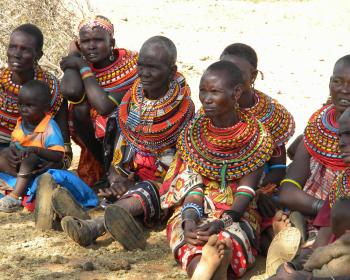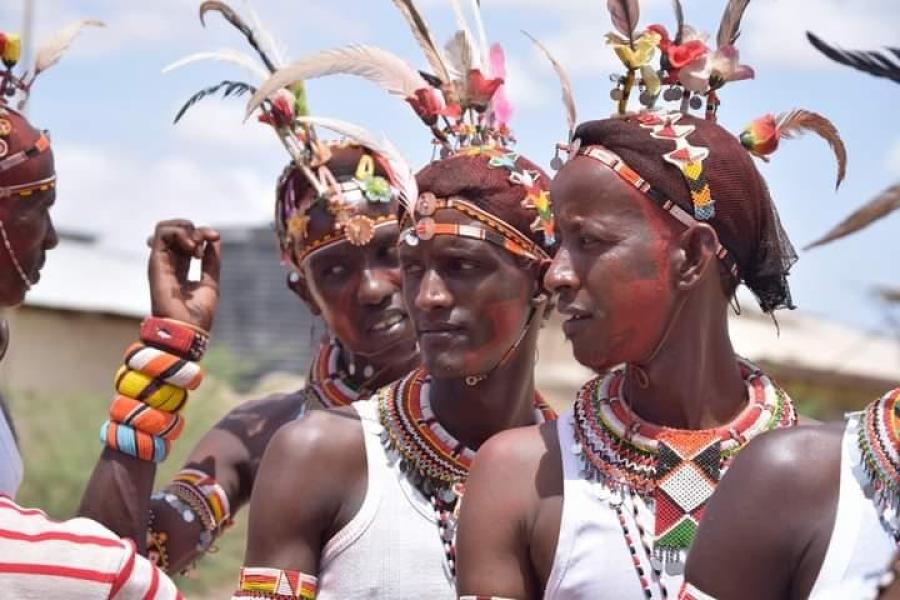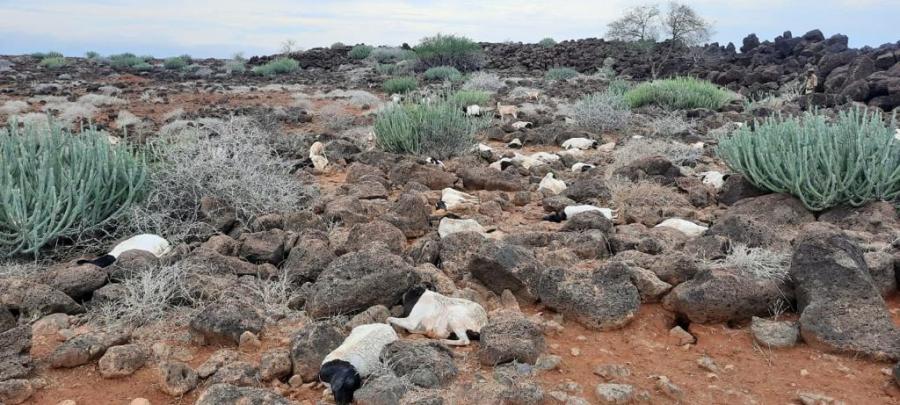According to a report issued by the Samburu Women for Education & Environment Development Organization (SWEEDO), Kenya’s new constitution “is a clean break with the past and provides several avenues for the pursuit and strengthening of Indigenous peoples’ personal and collective rights.”
In a historic constitutional referendum on 4th August, 2010, sixty-eight percent of Kenyans who turned out to vote supported the proposed new constitution.
SWEEDO reports that the new constitution defines a “marginalized community” as one that “out of need or desire to preserve its unique culture and identity from assimilation, has remained outside the integrated social economic life of Kenya as a whole, or an indigenous community that has retained and maintained a traditional lifestyle and livelihood based on hunter or gatherer economy; or pastoral persons and communities whether they are nomadic or a settled community that because of its relative geographic isolation has experienced only marginal participation in the integrated social and economic life of Kenya as a whole.” It obligates the state to provide for adequate representation of “marginalized groups” in all levels of government, execute affirmative action on behalf of these groups, and promote the use of Indigenous languages and the free expression of traditional cultures.
SWEEDO’s report continues in more detail:
Recognition
The interpretation clause defines “Marginalized community” to mean a traditional community that, out of a need or desire to preserve its unique culture and identity from assimilation, has remained outside the integrated social economic life of Kenya as a whole, or an indigenous community that has retained and maintained a traditional lifestyle and livelihood based on hunter or gatherer economy; or pastoral persons and communities whether they are nomadic or a settled community that because of its relative geographic isolation has experienced only marginal participation in the integrated social and economic life of Kenya as a whole.
From the above, the new constitution not only gives credence to indigeneity on the basis of hunter gatherer and pastoral lifestyles but also links these aspects with marginalization in line the African Commissions on Human and Peoples Rights decision in 2003. The new constitution also recognizes the concept of self determination as enshrined in UNDRIP by recognizing the need or desire by these communities to preserve their unique cultures and identity.
Language and Culture
Article 7 of the new constitution obliges the state to promote and protect the diversity of language of the people of Kenya. The state is also obliged to promote the development and use of indigenous languages. Article 11 recognizes culture as the foundation of the nation and obliges the state to promote all forms of cultural expression through literature, the arts, traditional celebrations, science, communication, information, mass media, publications, libraries and other cultural heritage. The state is also obliged to recognize the role of indigenous technologies in the development of the nation. Not only shall the state promote the intellectual property rights of the people of Kenya, Parliament is also required to enact legislations that will ensure communities receive compensation or royalties for the use of their cultures and cultural heritage, and legislation that will also recognize and protect the ownership of indigenous seeds and plant varieties, their genetic and diverse characteristics and their use by communities. Under the Bill of Rights, Article 44 gives every person a right to use the language and participate in the cultural life of his/her choice.
Representation of Marginalized Groups
Article 100 is supposed to complete provisions of Article 56 by allowing parliament to legislate law which will help to put clear recognition, promote and protect interests of this minority/marginalized groups which include women and youth.
This act of parliament will create specific domains where minorities will be given affirmative action. It will specifies how minority/marginalised groups representatives will be elected/nominated. It will put light how each level of government will make sure it will satisfies 1/3 representation of women in government, legislative assemblies and any position of leadership.
Citizenship
By recognizing dual citizenship, the new constitution paves the way for indigenous communities, like the Maasai, that live across boundaries to benefit.
Bill of Rights
Chapter Four, Articles 19-59 provides for a plethora of rights and freedoms. Article 56 specifically provides for the affirmative action for minorities and marginalized groups through programmes designed to ensure that they participate and are represented in governance and other spheres of life, are provided special educational and economic opportunities, access to employment, programmes to develop their cultural values, languages and practices and also ensure that they have reasonable access to water, health services and infrastructure.
Land and resources
Chapter five of the new constitution classifies land as public, community and private. Under Article 63, community land shall vest in and be held by communities identified on the basis of ethnicity, culture or similar community of interest. Community lands include those lawfully held in the name of group representatives, lands lawfully transferred to a specific community and any other land declared to be community land by any Act of parliament. It will also include lands lawfully held, managed or used by specific communities as community forests, grazing areas or shrines and ancestral lands and lands traditionally occupied by hunter gatherer communities. However, there are several caveats. Community land shall not be disposed or used except terms of legislation specifying the nature and extent of members of each community individual and collectively. This Article will not also be operationalized until parliament passes legislation within the next five years to give it effect. Further, under Article 66, the state may still regulate the use of any land in the interest of defence, public safety, public order, public morality, public health or land use planning.
Environment and natural resources
The new constitution obliges the state to ensure sustainable exploitation, utilization, management and conservation of the environment and natural resources and ensure equitable sharing of natural resources. The state shall also protect and enhance intellectual property rights in, and indigenous knowledge of biodiversity and genetic resources of the communities, encourage public participation in the management, protection and conservation of the environment.
Governance
Kenya will now be a pure presidential democracy with a two tier parliament that comprises on a senate and parliament. The system of government will be devolved with the country having been divided into 47 counties under governors elected by the people. IPs will have a sizable number of the counties. This will enable them to make decisions that will shape their destiny. In the counties where IPs will be the minorities, special provisions have been made to accommodate the interests of minorities in such situations.
source:
SWEEDO- Samburu Women for Education & Environment Development Organization.



